BLOG: FIFA Scandal - A tipping point for CSR?


I have been writing about Corporate Social Responsibility (CSR) and sport, especially football, needs a new level of responsibility for several decades - see for instance the group discussion in Linkedin I started many years ago CSR and Sport.
I am pleased that I have worked with UEFA on many occasions under their umbrella RESPECT programme. Yet I have had less success with FIFA and have since published titles such as Should FIFA be replaced? and Should Qatar World Cup be banned?
Continue reading Dr Michael Hopkins blog here.
Theo Chocolate: The Challenge of Going Green
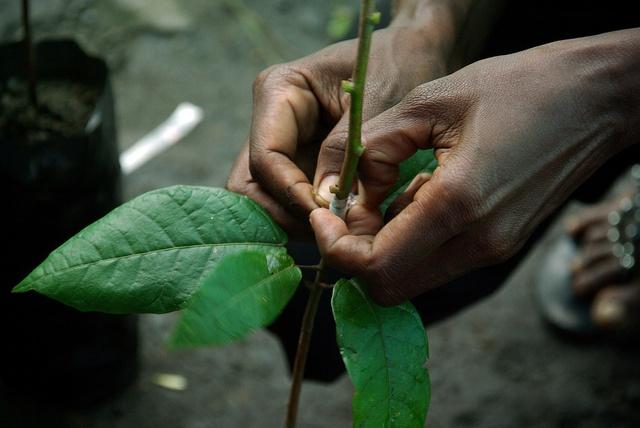

Organic chocolate is just about a household phenomena these days. Grocery stores stock the rich confection, and natural food markets love it for its increasing sales. Today, organic chocolate sales make up less than 5 percent of the global chocolate market, but it commands a mighty voice when it comes to North America’s insatiable sweet tooth. According to CandyIndustry.com, organic chocolate sales rose 20 percent in 2011, and most of those sales were in niche health food stores where organic products are often a going concern.
There was a time not long ago, however, when organic chocolate bars were as rare in stores as the pure bean from which they were made, when sourcing organic cocoa for U.S. distribution was an entrepreneurial dream. Creating an organic cocoa market meant kickstarting a string of organic, sustainably-trained farms in geographically-specific areas of the globe that could handle an environmentally sensitive crop. It meant ensuring that farmers not only produced a good quality product, but also cocoa that lived up to the ethical expectations of consumers half way across the globe.
Theo Chocolate co-founder Joe Whinney has been largely credited with launching that endeavor. In 1994 Whinney helped to develop the first supply chain for organically-grown cocoa, an essential ingredient for his Seattle-based chocolate line. As the company has grown and thrived, so has the recognition that chocolate, with its booming global sales, can be sourced in a way that not only satisfies a discerning customer base, but the livelihood of its farmers – and the well being of the environment. At the same time, it can be produced in a way that reinforces the ethos of sustainability: responsible stewardship at home as well as in the supply chain.
Ask Whinney what he feels is the key ingredient that defines a sustainable business these days, however, and he seems almost hesitant in his answer.
“I think the term ‘sustainable’ is somewhat amorphous,” Whinney said. “I mean, the basic definition that people use is that we’re meeting our needs today without jeopardizing future generations’ needs to meet their needs. But how you get that into business practices is challenging.”
In terms of Theo Chocolate’s business model, it is a holistic endeavor that extends to every corner of production, “all the way from the farm to the factory” -- from the well-being of the farmers and their community and the benefits they realize from the product sales to Theo, to how employees are treated and the impact that his business has on the environment.
And he is unsparing in his judgment of whether Theo meets those goals.
“I may get in trouble for saying this – but [I think] Theo is attempting to be a sustainable business. I think there are some areas where we are doing really well. I think there are other areas where we are still challenged, in part because we may not have the volume or the leverage to really drive change, and a lot of that energy.”
Leadership and vision, said Whinney, “that is unwavering, that is consistent and that is focused on having a positive impact in every aspect of our business” is at the heart of Theo’s success as a sustainable company. Maintaining that vision and accountability, said Whinney, is harder for a small business than a company that has the resources and leverage to meet its needs. “They have the resources that they can find and really impact change faster than we might be able to,” Whinney explained.
But it is Theo’s interaction with the small family farms that it relies on for cocoa in places like the Congo that is perhaps the most emblematic of the company’s view toward sustainability. The company trains the farmers on how to farm sustainably – an assumed step in today’s growing, hand-crafted organic chocolate trade, Whinney told us. “[And] then we provide dramatic incentives on the price to improve quality. So as you improve quality, you can substantially increase your income. The higher quality cocoa we get, the more we can sell a chocolate bar for and the more efficiency we have in our own operation.”
The approach works, but not just because it provides economic incentives for better product. It works because it also instills faith and the belief in the product, and in Theo’s business model.
Whinney said that Congolese farmers who were driven away from their land by rebels a few years ago and were forced to seek refuge in neighboring countries later returned to take up farming again after the rebels were driven out by United Nations peacekeeping forces.
“[All] these farmers came back home because they believed they had an opportunity,” Whinney said. “Their cocoa trees are still there. And they had the experience of receiving training for the product that had a positive impact on their lives.” He said their desire to return to a war-torn region and to continue investing in their community was evidence that Theo’s sustainable efforts were working.
Whinney freely admits that, for small chocolatiers like Theo, supply costs can present formidable challenges to sustainable goals.
“When you look at where we are shipping our products from, transportation -- and energy in transportation -- is a big, big challenge for us. And we are not large enough that we can command an ocean freight line on what kind of energy source should be used,” said Whinney, who sees the issue more as a “human behavior problem” that is best addressed by setting an example and encouraging or challenging those who may have more economic leverage to do their part. An example is the fair trade market, a concept that is near and dear to Whinney’s heart and, in his view, often suffers when larger companies attempt to change fair trade strategies by engaging in what is called “mass balance” methods of sourcing and producing their products.
For those who may have an eye on starting a resilient sustainable business, Whinney has simple advice: “clarity of vision and purpose.” Determining what you want to attain and why it matters is the first step, he says, to realizing your true goals. Self reflection and unwavering honesty in your aspirations are essential.
“Whatever your purpose, be honest about it, because that is what you’re going to end up achieving, and you need to be able to communicate that vision with a wide variety of stakeholders … Being clear about that is what allows you to build trust in the people you depend on and faith and loyalty and all those investments necessary in order to be successful.”
People, Whinney said, are at the core of what will make your business a success, whether they are the employers who keep the day-to-day operations going, the organizations your company may partner with, or the contractors who grow the ingredients or make the products you sell.
“I really think the key factor is people: how you treat people, how you engage people. In every organization there’s always opportunity to improve how we engage our employees, our customers [and] our suppliers. I think if we can take time to educate and engage and ensure that there is a sense of purpose for everybody involved,” said Whinney, “the more [we] can be successful.”
Image credit: Dept. of Foreign Affairs and Trade
EPA Helps Companies Make the Business Case for Green Power
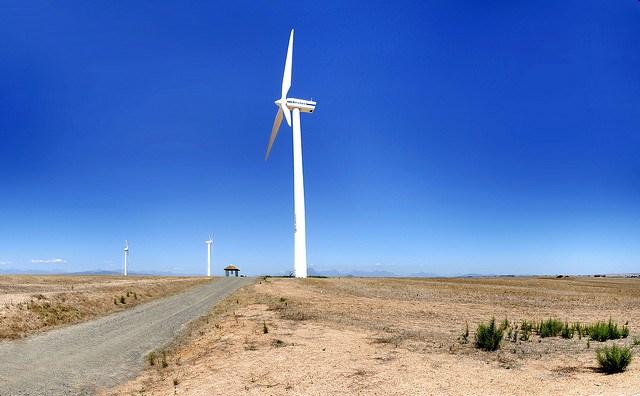

This article is part of a series on “The ROI of Sustainability,” written with the support of MeterHero. MeterHero helps companies and organizations offset their water and energy footprints through consumer engagement. To follow along with the rest of the series, click here.
Sometimes what gets lost in the discussion of green power is how complicated it can be for businesses to become adopters. The U.S. Environmental Protection Agency operates a program, the Green Power Partnership (GPP), that helps businesses become green power users.
The GPP is a “free, voluntary program” that encourages organizations to use green power, the EPA told TriplePundit in an interview. The federal agency does so by providing organizations with “ongoing recognition opportunities, including top lists, press releases, award ceremonies and more.” The GPP currently has more than 1,300 partner organizations using billions of kilowatt-hours of green power each year. The partners include Fortune 500 companies, small- and medium-sized businesses, government agencies, and colleges and universities.
There is a potential return on investment for using green power and for being part of the GPP. But what exactly are the financial incentives for joining the partnership? That’s the question we asked the EPA, and what I received back was a long list. One thing that stands out is the power that comes through collaboration. For example, the EPA listed community choice aggregation as an incentive for joining the GPP. In other words, by joining the partnership, organizations can purchase green power at a lower cost than if they purchased it alone.
Other financial incentives for joining the partnership include:
- Savings: There are purchasing mechanisms that can lead to savings over the long term.
- Credibility: Joining gives credibility to a green power purchase because it shows that an organization’s green power use meets nationally accepted standards supported by the EPA.
- Publicity and recognition: Being part of the GPP can differentiate an organization and brand from the competition.
- Networking: Being a partner means that an organization is affiliating with other green power leaders, including Fortune 500 companies.
- Information and guidance: The GPP provides technical assistance ranging from helping identify different procurement options to properly messaging actions after a purchase is made.
The Green Power Partnership and carbon neutrality
Leading members not only meet all of their electricity needs through green power, but also represent the largest green power users within the partnership. They make up the National Top 100 list and have a combined green power usage of over 23 billion kilowatt-hours a year, representing almost 83 percent of the green power commitments made by all partners.
Microsoft is ranked No. 2 on the National Top 100 list, with an annual green power usage of over 2.4 billion kWh that meets all of its electricity needs. Based in Redmond, Washington, Microsoft is one of the world’s largest technology and software companies, ranking second on both the Fortune 500 list and the Top 30 Tech and Telecom list. Microsoft has a goal to achieve carbon neutrality, and purchasing green power is helping the company work toward that goal.
What does Microsoft appreciate about the partnership? We talked to Tamara “TJ” DiCaprio, director of environmental sustainability at Microsoft, to find out. As she put it, “Procuring renewable energy can be complex.” The technical assistance and networking partners the GPP provides to procure green power are a big help. Being part of the partnership also provides Microsoft with credibility when procuring green power, and membership signals that the company aligns with nationally-recognized standards -- two aspects they also appreciate.
"Joining the Green Power Partnership provides a company with credibility to a diversified portfolio of green power purchases because it signifies that the company’s green power use meets nationally accepted standards supported by the EPA," DiCaprio told us. "In addition, the partnership provides technical assistance for its stakeholders who are interested in using green power, and networking with other renewable energy leaders."
Microsoft has another dollop of special sauce that helps pay for its green power purchases. The secret ingredient is an internal price on carbon. In July 2012, the company made a commitment to carbon neutrality and established an internal carbon fee model. The carbon fee "charges the business groups a tax on emissions associated with the energy consumed from datacenters, offices, software development labs, manufacturing plants and business air travel," DiCaprio explained. With the funds collected from the carbon fee, Microsoft has purchased over 10 billion kWh of green power.
The carbon fee allows Microsoft to associate a dollar amount "with the value of sustainability initiatives and the procurement of green power to be evaluated with additional financial metrics," DiCaprio said. The carbon fee also allows accelerated green power investments "by reducing the payback period for the project managers."
In DiCaprio's words, the internal carbon price “makes all the difference in the world.” And so does switching to green power through the GPP -- a move that cuts the company's footprint today and just may help it stay resilient in the future.
Image credit: Flickr/Warrenski
Memorial Day Flooding: A Grim Reminder of Environmental Risks


As floodwaters recede in central Texas and Oklahoma, residents begin to pick up the pieces and take account of what was lost. The Memorial Day storm brought tornadoes, torrential downpours and severe flooding that left at least 10 people dead and at least a dozen missing, NPR News reported on Tuesday. In Ciudad Acuña, a Mexican border-city of about 140,000 just west of San Antonio, a tornado leveled blocks of buildings on Monday and killed at least 13 people, according to New York Times reports.
In Wimberley, Texas, 38 miles outside Austin, a 44-foot surge sped down the Blanco River late Sunday, demolishing homes and businesses, Hays County Commissioner Will Conley told USA Today. The surge set a new record, blasting past a 1926 record of 32 feet. "It was literally a large wall of water that came down the Blanco River and destroyed everything in its path," Conley to told the paper on Tuesday.
President Barack Obama signed disaster declarations for affected areas in Oklahoma and Texas, including sections of Houston and Austin.
Some Houston roadways were still closed on Tuesday, and Austin schools faced closures and delays heading into Wednesday:
#houstonflood #HoustonFlooding #TexasFlood #flood2015 #availability Temporary housing available https://t.co/A9l7k3BjDg — Teri (@TeriBmw65) May 27, 2015
Wimberley schools canceled Wednesday; @BastropISD schools on delay: http://t.co/ujCCYS4x4h #centexfloods #atxfloods — Austin Statesman (@statesman) May 26, 2015
The Austin Statesman provided real-time coverage to city residents on Monday and Tuesday, advising on tornado warnings, power outages and other breaking news. On Twitter, local residents and journalists documented the floodwaters as they surged across central Texas:
House park is completely under water!!! I'm speechless #atxweather #floods #atxfloods #gopro #sad #bmx #atxstorms pic.twitter.com/SwMfDVdkpv — Austin (@austinbmx199) May 26, 2015
when you think its a river but it's actually a highway #houstonflood pic.twitter.com/idAROXGPXy
— stephanie (@PHILOCALYLOUIS) May 26, 2015
Dry Creek, Round Rock, TX after yesterday's storm. It usually has a trickle of water in it. https://t.co/WOsfyVAGpt via @YouTube #atxfloods — Paul Matchen (@NouveauArchaic) May 26, 2015
Here's a look at a very flooded Little Walnut Creek, inundating Dottie Jordan Park in NE Austin. #atxwx #atxfloods pic.twitter.com/OccyEOra90 — Chris Shadrock (@ChrisShadrock) May 26, 2015
Despite floods, Austin water restrictions still in effect
Despite floods, water restrictions are still in effect in the Austin area, reports local NPR affiliate KUT News. Like California and much of the Southwest, Texas is in the midst of prolonged drought. "Before this most recent round of rains, the lakes were 39 percent full, combined. Now, they're 55 percent full," the station reported on Tuesday.
“In terms of managing the drought, it’s very wet out in the Hill Country right now, but we’ve been very, very dry for a number of years, and it will take some time and several cycles of this activity to fully replenish our supplies," the Lower Colorado River Authority's vice president for water, John Hoffman, told KUT News.
Current water restrictions, imposed when the lakes' combined storage dropped below 45 percent, include one-day-per-week watering, a ban on car washing at home and a requirement that restaurants not serve customers water unless they ask for it, the station reported.
Spills provide a reminder of environmental risk
Late Monday night, the Austin Statesman reported that 10 Austin treatment plants reported wastewater spills due to flooding. "City officials had no estimation of how much wastewater overflowed but said that the threat to public health should be small because any wastewater would be extensively diluted by flood waters," the paper reported. But officials have advised residents within a half mile of an affected plant to distill or boil their tap water before drinking it.
A resident also spotted a disturbing oil slick on the 1000 block of N. Lamar Boulevard in central Austin:
Oil and other chemicals leaking out of 1000 N. Lamar #atxfloods pic.twitter.com/lV9zbep6lc
— Jake Brizendine (@jake_briz) May 26, 2015
We don't want to fall into the trap of saying every major weather event is related to climate change. But if you trust climate science, as documented by organizations like the Intergovernmental Panel on Climate Change (IPCC) and the National Wildlife Federation, it doesn't really matter whether this particular flood was caused by climate change or not. The fact remains that both of these organizations, and others, warn that we should be prepared for more severe weather events in the future. And unintended consequences -- like Austin's wastewater spills and mysterious oil slicks -- pose a grim reminder of the environmental risks that come with a failure to do so.
Austin is in the process of a resilience project to supplement local storm water systems and reduce flooding in the city's core. The 1.5-mile Waller Creek Tunnel was slated for completion in March, but poor weather and construction setbacks delayed the project, local NBC affiliate KXAN reported. The tunnel was still not complete when the storms hit on Monday, but Austin residents may rest easier knowing the effects of the next storm may be less severe.
Cities across the U.S. face similar storm water management issues, which can worsen flooding and unintended consequences like wastewater spills. Wastewater and storm water systems are outdated in many older cities across the Northeast and Midwest -- leading to a seriously gross phenomenon called combined sewage overflow, when both storm water and untreated wastewater discharge into local rivers due to extreme demand on drainage systems. Out West, prolonged droughts followed by heavy rains inhibit the soil's ability to absorb water, leaving city storm water systems inundated with runoff.
A growing number of cities are beginning to address their storm water woes and reduce both contamination of local waterways and flooding in their downtowns. (Check out this mitigation success story in Philadelphia for an example.)
As extreme weather and natural disasters continue to overtake our newsfeeds at a rapid clip, one thing is for certain: With a warming climate and an uncertain future, resilience will only become more important for communities around the world.
Image credit: @jake_briz via Twitter
HP Releases Living Progress Report Today
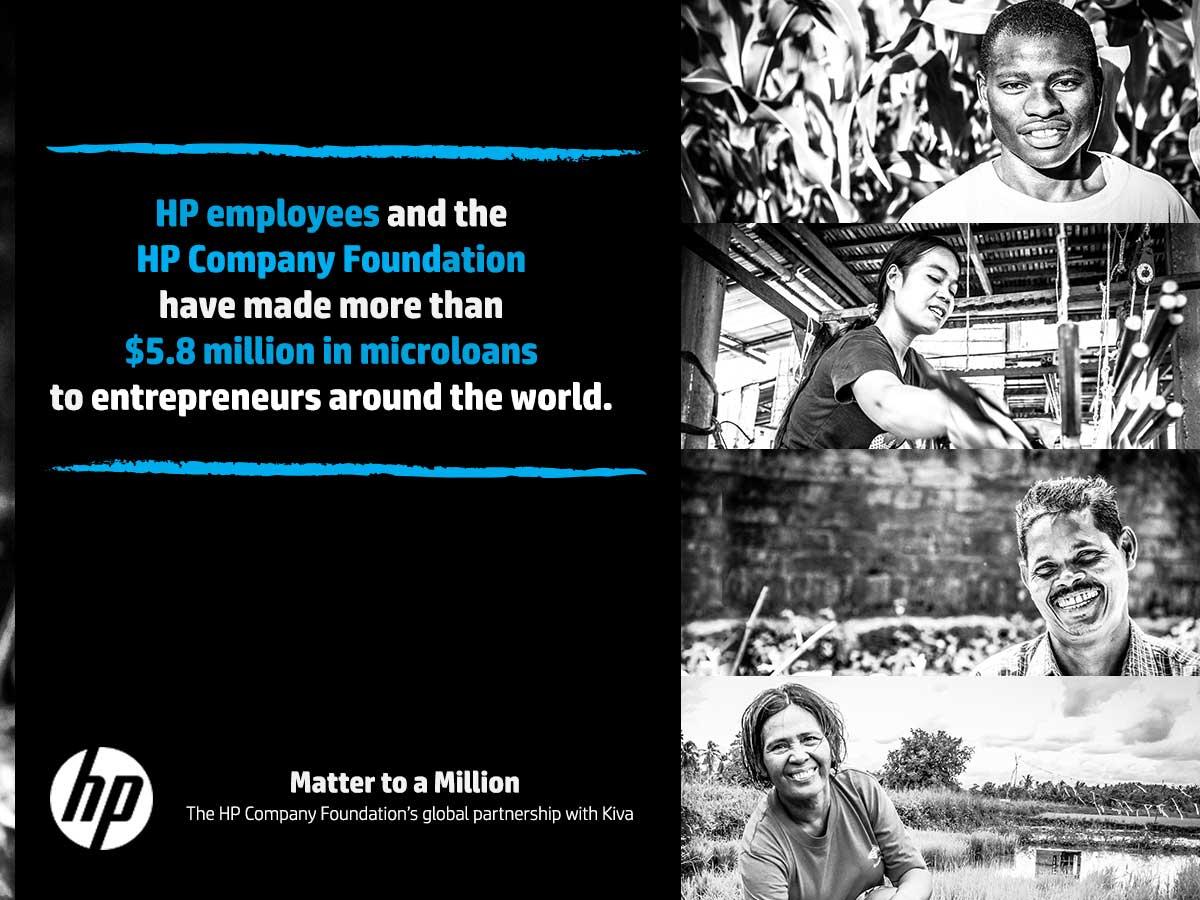

This post is sponsored by HP. Opinions are my own.
For updates on HP's progress toward human, environmental and economic improvement, check out the video below:
Today HP releases its latest Living Progress report.
Living Progress is the name HP chose for its corporate social responsibility (CSR) reporting efforts. So, why living progress? The hardware giant issued its first Global Citizenship Report in 2001, but it felt that this terminology was not sufficient for what the company was trying to do.
At that time, CEO Meg Whitman wrote:
"This new framework builds on our commitment to global citizenship, which has been one of our corporate objectives for nearly six decades. Here at HP, we are committed to advancing the overall health and well-being of people, helping businesses and economies thrive, and strengthening the environment. It’s this focus on balancing all three elements of human, economic, and environmental progress that enables us to create true Living Progress."
The term living progress helps HP measure and manage people, planet and profit simultaneously, something we know a thing or two about around here.
In its first Living Progress report, HP shared its progress on carbon management (the carbon footprint was down 16 percent from 2012) and published its water footprint for the first time. On the human side, HP continued its efforts on human rights and led the charge to source conflict-free minerals for supply chain needs. HP also considered its customers through special privacy initiatives and its employees through a variety of wellness campaigns.
What's new in 2014?
The most impressive thing about this year's report is its increased focus on governance and stakeholder engagement. I love to see this because completing the communications loop in sustainability reporting is an important part of the reporting cycle, one many organizations neglect. The idea is to not just send out the sustainability report, but to seek continual feedback from stakeholders about whether or not the reported material is relevant, useful and timely and use this information to inform future reports.
HP has tackled this complicated issue -- receiving feedback, in a number of in-person and virtual engagements, from the highest levels like Chief Progress Officer Gabi Zedlmayer speaking at NYC's climate week, down to helping individual customers with their green procurement challenges.
We've seen this process in action at HP -- TriplePundit worked with HP on three separate Twitter chats with company stakeholders to discuss the Living Progress report (First in June of 2014, then October 2014 at SXSW Eco and finally this past April). It has been a pleasure to witness true stakeholder engagement over time and watch the process evolve.
When it comes to the human, environmental and economic commitments embodied in the Living Progress report, HP has a number of great stories to tell.
The human strand demonstrates a number of deeper engagements, from a new commitment to require direct employment of foreign migrant workers throughout the supply chain to a 15 percent improvement in Social Accountability International's Social Fingerprint benchmark, making HP among the top tier. HP also employed hundreds of thousands of people at supplier sites it audited through the Supply Chain Responsibility program. These efforts demonstrate how the Living Progress framework is helping HP find new ways to engage and protect workers throughout the supply chain.
Human commitments didn't stop with employees and supply chain workers. HP also invested in its customers, helping them meet new green procurement requirements. This engagement has a real financial return behind it: $24 billion in existing and potential business revenue.
On the environmental side, HP and all hardware manufacturers have a unique challenge: To grow means to sell more products, which can make it difficult to maintain or reduce carbon and water footprints. HP tackles this challenge on a per-product basis, with a focus on producing more energy-efficient products that help customers save energy. These include the water-cooled HP Apollo 8000 System, which uses 28 percent less energy than air-cooled servers, saving up to 3,800 tons of carbon dioxide equivalent annually. The company also released a new, thinner, paper produced from FSC-certified feedstocks. While this paper doesn't contain recycled content, the reduced weight lowers the carbon intensity of shipping. More importantly, the paper won't jam like many recycled paper products.
HP has also taken increased responsibility for safe recycling and reuse of its products, a very exciting update. This year the company added a new closed-loop process for polypropylene -- new inkjet cartridges are made entirely from material recycled by customers. There is now some recycled plastic in more than 75 percent of HP inkjet cartridges shipped for commercial sale. The hardware manufacturer also recovered 157,500 tons of hardware (including HP and non-HP products) and supplies. Of this amount, HP was able to repurpose 39,100 tons of hardware units, and it recycled the rest.
Another example of HP's triple-bottom-line approach is its partnership with Kiva, through which the HP Company Foundation provides every employee with a $25 credit to lend. Almost 120,000 employees used their credits through December 2014. Of course the HP Company Foundation could just give this money directly, and it did give additional funds to Kiva (a total of $5.9 million was given). But, by empowering employees to give, and give to causes they feel passionately about, HP engages its whole workforce in the giving process.
But how does it compare?
CSR reports should be judged not only against a company's past performance, but also how they stack up to the competition. Of course, one of the challenges facing all who seek to compare apples to apples in the sustainability space is that each company reports on its sustainability progress on its own terms, so direct comparisons are difficult. Nevertheless, it's important for any organization to understand what and how its closest competitors are managing sustainability.
Two of HP's key competitors (according to Yahoo Finance) are Dell and Accenture. Dell, another computer hardware manufacturer, make sense. Accenture, a consulting firm, was a surprise for me to see. Accenture calls itself the world’s largest independent technology services provider, which speaks to the connections between this firm and a hardware company like HP. As the hardware world becomes more and more competitive, companies like HP will differentiate themselves by offering enterprise solutions (servers, data management), and the increasing differences between these services and the printer-and-ink game are part of the reason HP is soon to split into two companies.
Accenture has rightly chosen to focus on its 323,000 employees in its sustainability report. The company's marquee program is Skills to Succeed, a job-training program, which the consulting firm has offered to over 3 million people. The firm is also taking efforts to reduce its own environmental impact, mainly through reductions in employee travel, which is an appropriate place for a consulting firm to place its efforts.
Christiana Figueres, executive secretary of the United Nations Framework Convention on Climate Change (UNFCCC), has only good things to say about the firm:
"By exerting pressure on their suppliers, they have used their influence to improve the sustainability performance of entire supply chains. In turn, suppliers have come to realize that improved performance can confer competitive advantage – not only making them more efficient, but also more attractive to sustainability inclined customers."
Dell shares a remarkable amount about its sustainability performance, especially for a private company. While we can only estimate its market cap, Dell shares a great many details about its sustainability performance online. Dell tracks its 2014 performance against 2020 goals it set for itself. The 2020 Legacy of Good Plan is Dell's commitment to reach clear and measurable goals around sustainability and corporate social responsibility -- and this framework clearly galvanizes the organization in a similar way to Living Progress. I appreciate how easy it is to find Dell's numbers, and how close at hand they are.
Both Dell and HP use the GRI reporting guidelines to inform their reporting and use them well. It's interesting to see how different their reports are, given that they are in the same industry and use the same reporting guidelines. HP uses a PDF and videos to tell its story, listing highlights at the beginning and details down the line throughout the report. Dell, on the other hand, organizes its sustainability reporting through a website. Numbers good and bad are at the touch of a finger. The color and structure of each report speaks to the company's personality as much as to their sustainability performance.
While HP gears up for a split this year into two Fortune 50 companies -- Hewlett Packard Enterprise and HP Inc. -- at the present time both organizations are gearing up to continue the Living Progress program, at least in spirit if not in name.
"This shift also presents a unique opportunity to examine the full breadth of our Living Progress impact worldwide, and to streamline our strategy to optimize return on our citizenship investments. In 2014, we began conducting a strategic review of our Living Progress initiatives to ensure we are maximizing capacity, providing for future growth opportunities, and enabling continued contributions to society. Building on our 75 year heritage and more than a decade of reporting, citizenship will continue to be integral to both companies."
I've said it before and I'll say it again, sustainability programs must include some kind of tangible return, or they'll be cut as soon as the wind shifts. It's exciting to see HP focus on connecting economic return to social and environmental well-being. The Living Progress report certainly demonstrates the benefit of the integrated approach and one hopes that it will live on in both HP Inc. and Hewlett Packard Enterprise.
Ethics on Wall Street? Let’s Get Real


Linking Wall Street and ethics together in the same thought might seem more like the start of a bad bar joke than a serious topic, but seriously, people study this.
And surprise! Articles in the New York Times and ThinkProgress note that five years after the passage of U.S. financial reform legislation, many Wall Street professionals say their industry is prone to lawbreaking and ethical compromises in the name of profit.
They reference a report from the University of Notre Dame’s Mendoza College of Business, entitled The Street, The Bull and The Crisis: A Survey of the U.S. and U.K. Financial Services Industry, released earlier this month. The main finding? “Unethical behavior continues to persist.”
The Times’ Andrew Ross Sorkin writes: “Rather than indicating that Wall Street has cleaned itself up, [the report] suggests that many of the lessons of the [financial] crisis still haven’t been learned. And the mind-boggling settlement numbers, as well as stringent new rules, like the of Dodd-Frank regulatory overhaul in 2010, appear to have had little deterrent effect.”
The 11-page report concludes that many individuals “continue to believe that engaging in illegal or unethical activity is part and parcel of succeeding in this highly competitive field. With legal and regulatory sanctions coming out on almost a daily basis, the industry has a long way to go to regain the confidence of the public.”
More findings from the report:
- Forty-seven percent of respondents find it likely that their competitors have engaged in unethical or illegal activity in order to gain an edge in the market. This is an increase from the 39 percent who reported the same when surveyed in 2012. And that percentage jumps to 51 percent for individuals earning $500,000 or more per year.
- More than one-third (34 percent) of those earning $500,000 or more annually have witnessed or have first-hand knowledge of wrongdoing in the workplace.
- Twenty-three percent of respondents believe it is likely that fellow employees have engaged in illegal or unethical activity in order to gain an edge, nearly double the 12 percent reported in 2012.
- In the U.K., 32 percent of individuals said they would likely engage in insider trading to earn $10 million if there was no chance of getting arrested, compared to 24 percent of respondents from the U.S.
- Nearly 1 in 5 respondents feel financial services professionals must at least sometimes engage in illegal or unethical activity to be successful.
- Twenty-seven percent of those surveyed disagree that the financial services industry puts the best interests of clients first. This figure rises to 38 percent for those earning $500,000 or more per year.
- About a third of the respondents (32 percent) believe compensation structures or bonus plans in place at their company could incentivize employees to compromise ethics or violate the law.
- Thirty-three percent of financial services professionals feel the industry hasn’t changed for the better since the financial crisis.
It’s not a very pretty picture. But as the ThinkProgress article notes: “Gauging the industry’s ethics is difficult, and the new survey suggesting the financial profession has serious ethical problems features some important methodological quirks. Respondents volunteered, rather than being sampled randomly as a scientific study would require, and most of the questions posed in the survey are based on speculation rather than hard evidence.
“But the findings nonetheless provide a limited snapshot into how industry insiders view their own ethical obligations and rate the conduct of their coworkers.”
“Without an aggressive plan to stamp out misconduct,” the report concludes, “we are simply sitting and waiting for another financial disaster to strike.”
It’s tough to impose — and enforce — ethical conduct at the intersection of Wall Street and capitalism.
Image credit: Wall Street by Sue Waters via Flickr CC
Twitter Chat Follow-Up: Kimberly-Clark and WWF on Responsible Fiber Sourcing
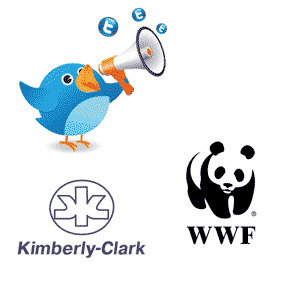

Editor’s note: This post is a follow-up to TriplePundit’s recent Twitter chat with Kimberly-Clark and the World Wildlife Fund. In case you missed it, you can catch a recap here.
Last month, TriplePundit hosted a Twitter chat with Kimberly-Clark and the World Wildlife Fund to talk about their collaboration to ensure responsible fiber sourcing.
We couldn't get to every question in our chat, so Linda Walker (@BalanceWWF), director of the Global Forest & Trade Network-North America Program for the World Wildlife Fund, and Iris Schumacher (@KCPNorthAmerica), North America sustainability marketing leader for Kimberly-Clark Professional, got back to us with their answers.
Q26 from @BAFPACKAGING: As a co-packer, how can I use eco-friendly packaging when my customer may want to use something more cost efficient? #RespFibers
- @KCPNorthAmerica: @KCPNorthAmerica has adopted the How2Recycle label on product packaging to help customers divert their packaging waste from landfill. http://www.how2recycle.info/
- @BalanceWWF: Principles of #biomimicry and innovation can be incorporated into the production, use and recovery of #RespFibers to maximize their sustainability.
- @KCPNorthAmerica: Many non-tree plant fiber products are similar in price with products that contain recycled and/or virgin fiber.
- @BalanceWWF: #RespFibers, like tree fibers, should account for the true environmental and social costs of producing them.
- @BalanceWWF: Some #RespFibers in early stages of development might require addl up-front costs to find best varieties and align manufacturing technologies.
- @KCPNorthAmerica: We are working to keep our plant fiber products comparable with our other sustainable product offerings
- @KCPNorthAmerica: Today, in a resource-constrained, digital world, with fewer sources of recycled fiber, and the need to put less pressure on natural forests, it’s important to continue exploring new non-tree fiber alternatives.
- @BalanceWWF: Important issue – conversion of forests to pulp plantations for paper in some parts of world is a driver of deforestation. US consumers key to sustaining forests both in the US and around the globe by looking for FSC, recycled and responsible alt fiber products. #RespFibers
- @BalanceWWF: Yes, many other types, ex: bagasse (sugar cane waste), Arundo donax, kenaf, miscanthus, banana leaf #respfibers
- @KCPNorthAmerica: Sustainability is a driving force behind everything we do. From design and manufacture to distribution and disposal, we are always seeking ways to protect natural resources, reduce waste, save space and minimize our environmental footprint.
- @KCPNorthAmerica: We strongly value the guidance and thought leadership WWF brings to KC as we continue to lead with sustainability and responsible forestry at the heart of all we do.
- @BalanceWWF: WWF and @KCPNorthAmerica working together has built stronger consumer awareness of responsible forestry in many regions of the world. #RespFibers
- @BalanceWWF: Innovative way to take pressure off of natural forests. Gives paper companies more options for diversifying supply and reducing sourcing risk, reducing competition over tree fiber from things like biomass.
- @KCPNorthAmerica: It’s a pioneering approach to fiber sourcing that we hope will transform the paper products industry. As a world leader in sustainability, Kimberly-Clark is paving the way – delivering innovative products along with the quality and performance that you’ve come to expect from our trusted brands.
- @KCPNorthAmerica: @KCCorp has a goal to transition at least 50% of wood fiber sourced from natural forests to alternative fiber sources by 2025. This is in alignment with our overall business strategy.
- @BalanceWWF: Depends on WHAT species is planted, WHERE it’s planted, making sure no forest conversion to plant, and how much water/chemicals needed. Ag waste can keep material out of landfill. More here.
- @KCPNorthAMerica: @KCCorp is committed to meeting our 2025 sustainability goals. We are excited and proud to be on this journey to reduce pressure on natural forests.
- @BalanceWWF: Some alt fibers can require more irrigation than other crops. Need to consider trade-offs between different ag fibers and also different ag crops in an area #respfibers
- @KCPNorthAmerica: Education and engagement are really important to bringing people along on this journey. Partnerships with WWF and @FSC_US help to make that possible.
- @BalanceWWF: Make it affordable, show that their choices make a difference. Choosing #FSC products made from #Respfibers helps forests & all of us who depend on them
- @BalanceWWF: Other ag certifications in development can help consumers too: See here.
Q&A: Recent Grad Rosalynn Dodd Talks Horses, Leadership and Sustainability Education


Rosalynn Dodd of Calgary, Alberta, Canada, has been busy. Since graduating from the Executive Master's in Sustainability & Leadership (EMSL) program at ASU in January, she launched her own consultancy and has been named for several national awards, including Canada's Clean50 Emerging Leader 2015.
TriplePundit talked with Dodd to find out more about her decision to pursue a sustainability education and how it impacted her career.
TriplePundit: Let's start by talking about your experience at ASU. What was your focus of study, and when did you graduate?
Rosalynn Dodd: I was extremely excited to be a member of the very first cohort of the Executive Master's in Sustainability & Leadership (EMSL) program at ASU. It was an action-packed 13 months with four incredible instructors in four major sustainability themes (strategy, global context, leadership and communications). We had three in-person "immersives" (two at the ASU campus in Tempe and one in the Netherlands), and the rest of the course was hosted online. I graduated in January 2015.
3p: What made you decide to pursue a sustainability degree?
RD: I have an undergraduate degree in business with a personal focus on sustainability and have worked for a couple of companies that put sustainability as a top priority. I strongly believe that business has the power to solve the world's social and environmental problems when it is properly set up to do so. I also know that companies that are pursuing sustainability are out-competing their competitors in innovation, ability to attract and retain top talent, and their bottom line.
I knew that I wanted to pursue a master's degree and wanted to learn as much as I possibly could with respect to sustainability in business. I didn't want a certificate tacked on to another degree, and I didn't want validation for what I already knew. I wanted a degree that would position me as a leading expert in sustainability, leadership and business because I know how many companies are looking for that kind of expertise. I looked at MBA programs, MSc programs and everything in between, but when I found the EMSL, I knew I found what I was looking for -- it was the perfect combination of topics, with incredible instructors and from a school with deep sustainability knowledge already in place.
3p: What are you up to now? Briefly describe your current role and responsibilities and how long you've been on the job.
RD: I am a founding partner of a small sustainability consultancy firm. We work with small- to medium-sized businesses to incorporate sustainability into their business model and into their culture. My personal focus is on sustainability leadership and developing capacity among "up and coming" leaders. I am currently developing an adaptive leadership program that is an equine (horse) facilitated leadership and sustainability program. Horses communicate through leadership, even with people, so they are excellent teachers for leadership skills that transfer directly into the workplace.
I am also teaching a course at the University of Calgary Continuing Education in Sustainability and Environmental Stewardship where I get to share my passion and knowledge in sustainability with a new group of students every semester.
3p: Have you found that your sustainability education was a benefit in the field?
RD: Absolutely. In consulting and capacity-building work, potential clients are very interested in experience and credentials. Having a master's degree in sustainability instantly elevates my credibility. My focus and background in business has also been extremely helpful as it allows me to speak in business terms. I always look for the business case and the value proposition of sustainability, which helps to get potential clients on board.
I also have much more confidence in my own skills and knowledge now, which helps me in tougher conversations; I have way more tools at my disposal that I can use to approach sustainability, and I have an incredible network of peers that I can call on if I have challenges that I can't solve on my own.
I have been recognized with national awards and asked to keynote at conferences on sustainability and leadership, something I really enjoy doing.
3p: Do you have any advice for students who are thinking about a sustainability degree?
RD: Do it! My experience was incredible. I really enjoyed my program, my instructors and my cohort, so I have nothing but good things to say about the degree. I know that sustainability is only going to become more important in business, and the more people that are equipped with the skills they need to find opportunities through sustainability, the better off we will all be. There is a massive variety of sustainability programs out there, from social science, to environmental science, to business focus and more. I spent a lot of time looking for the right program for me, so I know that there are lots of options for people depending on what their specific area of interest is.
3p: What's your biggest sustainability pet peeve and why? Disposable grocery bags? Trash in the compost? Cars double-parked in the bike lane? Share your thoughts!
RD: Just one? [Laughs] I would have to say that my biggest pet peeve is when people externalize the responsibility. So many people blame big business, government, their institution or their coworkers for why they aren't more sustainable themselves. I think that every single person has a role to play and needs to make a personal effort. No one is perfect; no one can do everything; but everyone can (and should) do something. It means taking a second longer in making decisions -- being a little bit more aware and deciding what you can do to make a more sustainable choice, every little decision can add up. Don't blame corporations and say they need to change without first looking at yourself and knowing what opportunities exist for you to personally improve -- corporations are just collections of individuals after all.
French Insurer Axa Divesting From Dirty Coal
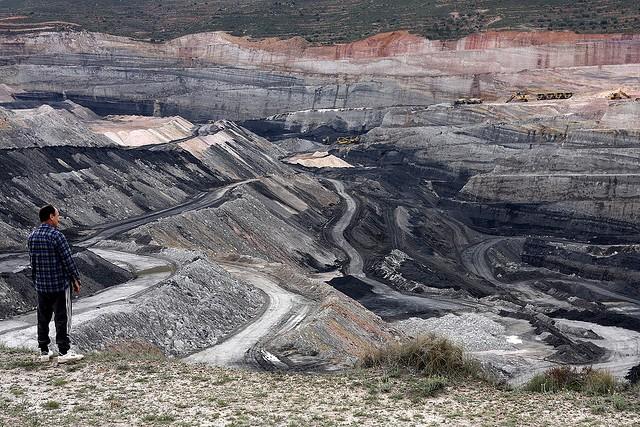

The divestment movement has urged investors to move away from fossil fuel investments. That movement just gained a big victory. The French insurer, Axa, one of the largest insurance companies on the planet, announced that it will sell $559 million of its coal investments.
Axa is divesting “from the companies most exposed to coal-related activities for the assets managed internally,” Henri de Castries, chairman and CEO of Axa, said in a blog post. There is one big reason why Axa is divesting from coal, and that reason is climate change. De Castries pointed out that the last 30 years “have been the warmest period of the last 1,400 years in the Northern Hemisphere and each of the last three decades has been successively warmer at the Earth's surface than any preceding decade since 1850.”
In other words, the planet is heating up, and weather-related events are increasing. Axa has paid out over $1 billion in weather-related insurance claims. As a result, climate risk is a “core business issue” for the insurance company.
Coal is the dirtiest fossil fuel
Why is Axa divesting from coal, as opposed to other fossil fuels? Coal is really dirty. It has the highest carbon content among fossil fuels. In the U.S. alone, carbon emissions from coal totaled 24.5 percent of greenhouse gas emissions in 2012, according to the Center for Climate and Energy Solutions. Coal is also one of the most widely distributed energy resources. There are recoverable coal reserves in almost 70 countries. Coal supplies 29.7 percent of global energy use and accounts for 44 percent of global carbon emissions.
Axa has also signed the “Montreal Pledge” to both assess and disclose the carbon intensity of its investments by December 2015. However, the company is not just divesting from dirty coal, but is also investing in clean renewables and technology. The global insurer has committed over $3 billion to triple its “green investment footprint” by 2020.
Dealing with climate change beyond divest-invest
Axa is being very proactive about climate change, beyond divesting in coal and investing in renewables, in both developed and developing countries. In developed countries, Axa offers extreme weather early-warning systems and prevention services to its customers. It has also developed more than $69 million worth of insurance for renewable energy, which helps “enable this market to develop to its full potential,” said de Castries.
In developing countries, Axa developed a partnership with the World Bank to expand what it calls parametric insurance solutions, or innovative climate index insurance. It has also expanded its investments and partnerships with key players like Leapfrog and Microinsure. This month, Axa joined the African Risk Capacity Initiative, described as a regional insurance pooling mechanism that helps African Union member states anticipate extreme weather events. Nine countries are expected to be covered by the initiative in 2015, with the goal of increasing the amount to over 20 in the next four years.
Image credit: Flickr/Jennifer Woodard Madera
Interior Department to Fund Water Projects in Drought-Stricken States


The entire state of California is in a drought, and nearly half of it is in the worst category: exceptional. Four years of record low precipitation across the state and low snowfall in the mountains have left reservoirs at very low levels. It’s getting seriously scary, and the state needs all the help it can get.
Enter the federal government. The Department of the Interior’s Bureau of Reclamation announced last week that it will invest almost $50 million to improve water efficiency and conservation in 12 western states, including California. The Bureau of Reclamation will invest over $24 million in grants for 50 water and energy efficiency projects. Over $23 million will be invested in seven water reclamation and reuse projects in California, and almost $2 million in seven water reclamation and reuse feasibility studies in California and Texas.
"In a time of exceptional drought, it is absolutely critical that states and the federal government leverage our funding resources so that we can make each drop count," said Interior Secretary Sally Jewell in a statement. "Being 'water smart' means working together to fund sustainable water initiatives that use the best available science to improve water conservation and help water resource managers identify strategies to narrow the gap between supply and demand."
Two projects funded in already arid San Joaquin Valley
Some of the projects the Bureau of Reclamation plans to fund in California are in the state’s hardest hit areas. The San Joaquin Valley, that big swath in the middle of the state that helps feed the nation, is one of those areas, and the Bureau is investing in two projects.
One of those projects is in Stanislaus County, where $300,000 is designated by the Bureau for a $787,350 project to line about 2 miles of the earthen Molasses Ditch with a concrete-lined canal. The project, which will be implemented by the Central California Irrigation District in Stanislaus County, is expected to save 476 acre-feet of water a year that is currently lost to seepage.
Another project involves the city of Fresno, the largest city in the San Joaquin Valley. The Bureau is funding $1 million of a $17.85 million project that is the largest funded project. Called the Friant-Kern Pipeline Project Reclamation, the city of Fresno will install 4.6 miles of 60-inch diameter pipe and a new turnout diversion structure to connect the Friant-Kern Canal with the city’s Northeast Surface Water Treatment Facility.
The new pipeline will allow Fresno to bypass 47 miles of lined and unlined open-channel canals now used to deliver water to the treatment facility. The project is expected to save 4,050 acre-feet of water a year by reducing seepage. The conserved water will be delivered to the treatment facility where it will be treated and then used to meet Fresno residents’ water needs. The project helps the city meet the strategies in its Water Resources Management Plan, a plan that focuses on optimizing groundwater and surface water supplies so there is enough water during times of extended drought.
Image credit: Flickr/bluesbby